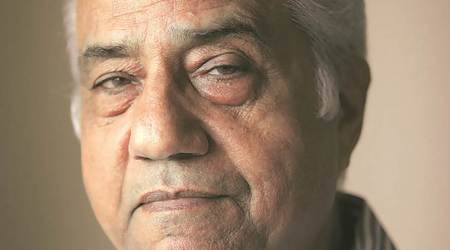 Supreme Court of India (File)
Supreme Court of India (File)
A close reading of the privacy judgment reveals that the judges have tapped into contentious debates of the times even though they have confined themselves to the question of privacy as a fundamental right. “I do not think that anybody would like to be told by the State as to what they should eat or how they should dress or whom they should be associated with either in their personal, social or political life,” Justice J Chelameswar wrote in his over 40-page order.
The political narrative in recent times has been dominated by issues like imposing food habits in the context of eating beef, one’s right to choose a life partner against the backdrop of Section 377, the polarising “love jihad” campaign and the resurgence of regional feelings reflected in the massive Jallikattu protests in Tamil Nadu or the pro-Kannada agitations in Karnataka against Hindi.
While pro-Kannada groups defaced Hindi signboards in Karnataka, a BJD MP recently took objection to a union minister writing to him as well as other MPs in Hindi. In all these cases, the debate was framed around the forceful imposition of cultural homogeneity on a plural society and an assault on personal liberties.
Against this backdrop, many observations in the verdict today link privacy with culture, plurality and diversity — and can be seen as social commentary. “Privacy protects heterogeneity and recognises the plurality and diversity of our culture,” Justice D Y Chandrachud wrote in his order for himself and Chief Justice J S Khehar and three others.
“The right of privacy is also integral to the cultural and educational rights whereby a group having a distinct language, script or culture shall have the right to conserve the same,” wrote his colleague Justice S A Bobde. Even the controversies about what school children should read or censorship of art has found an echo in the verdict.
“History abounds with examples of attempts by governments to shape the minds of subjects…prescribing what to read or not to read; what forms of art alone are required to be appreciated leading to the conditioning of beliefs; interfering with the choice of people regarding the kind of literature, music or art which an individual would prefer to enjoy. Such conditioning is sought to be achieved by screening the source of information or prescribing penalties for making choices which governments do not approve,” writes Justice Chelameswar.
“The choice of appearance and apparel are also aspects of the right of privacy. The freedom of certain groups…to determine their appearance and apparel (such as keeping long hair and wearing a turban) are protected not as a part of the right of privacy but as a part of their religious belief,” he adds.
Diversity was underlined by Justice Sanjay Kishan Kaul: “In an era where there are wide, varied, social and cultural norms and more so in in a country like ours which prides itself on its diversity, privacy is one of the most important rights to be protected both against State and non-State actors and be recognized as a fundamental right.”
Attacks by self-styled cow vigilantes, non-state actors forcibly enforcing ban on cow slaughter, had even forced Prime Minister Narendra Modi to warn against such violence. “The majoritarian concept does not apply to Constitutional rights and the Courts are often called up on to take what may be categorized as a non-majoritarian view, in the check and balance of power envisaged under the Constitution of India,” Justice Kaul wrote.

